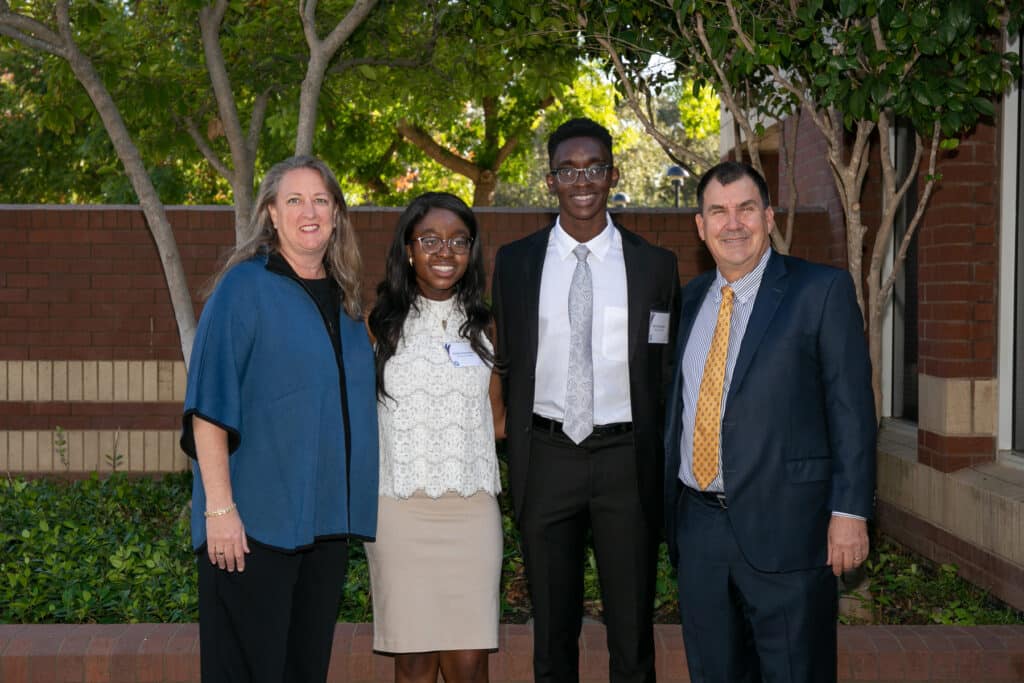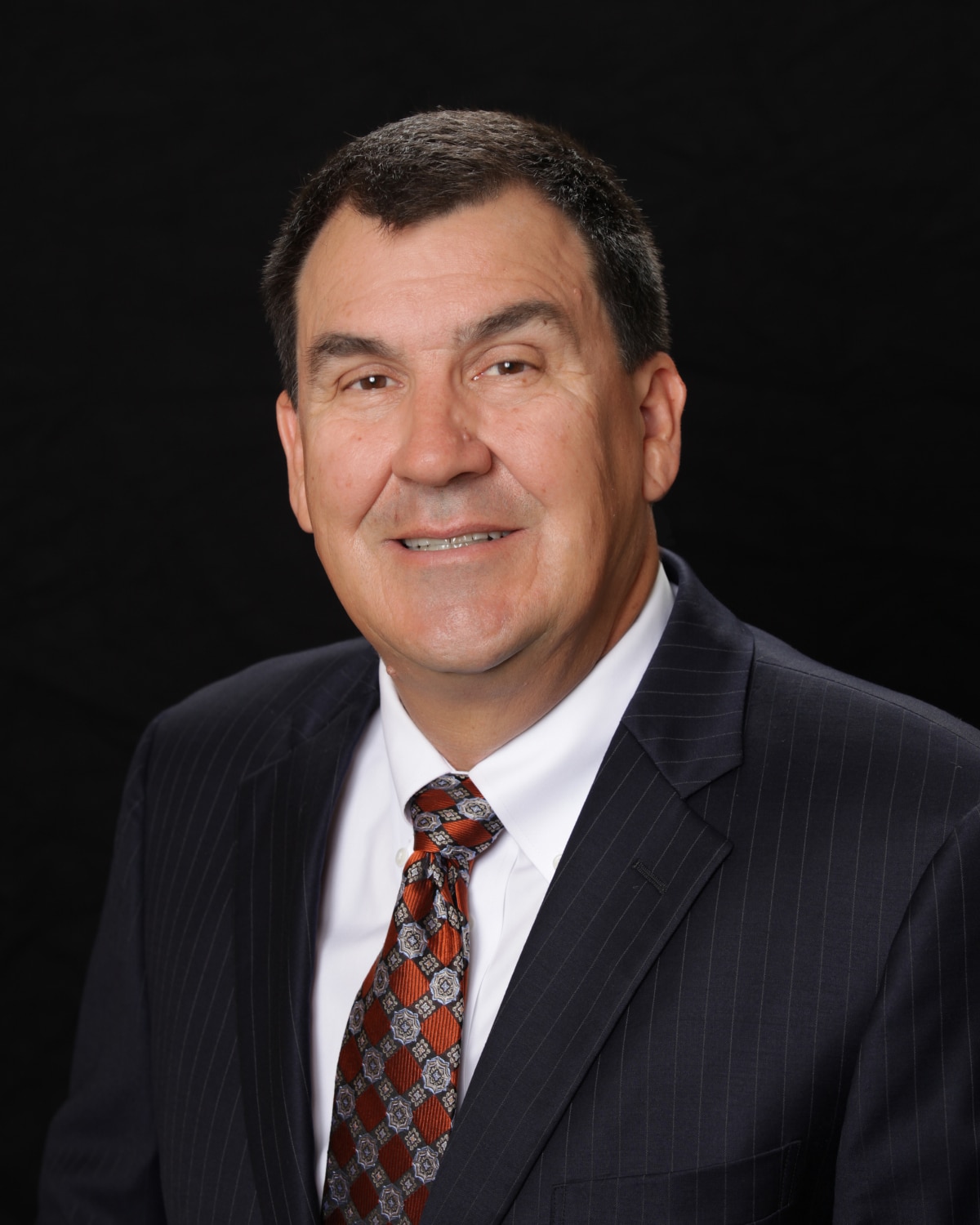The following story appeared in the February 2022 issue of National Housing & Rehabilitation Association’s magazine, Tax Credit Advisor.
(Editor’s note: The following interview was conducted in January 2022, when Covid cases were at a much higher level because of the omicron variant.)
By Darryl Hicks
When the National Housing & Rehabilitation Association (NH&RA) convenes in Palm Beach, FL later this month for its Annual Meeting, Geoff Brown will officially become the next chairman of the Board of Directors.
Under Brown’s leadership, USA Properties Fund has become one of the largest developer-manager-owners of affordable housing in the West and a leader in the multifamily industry.
He is widely regarded as an innovator who utilizes creative financing solutions to overcome funding gaps and complete projects, and is a firm believer in the green building movement and incorporating solar power in almost every property the company develops.
Brown is also an advocate who believes there is a dangerous shortage of affordable housing in California and that public officials should allocate greater resources to increase supply. And he’s always exploring new ways to improve access to social services at his properties.
Tax Credit Advisor sat down with Brown to talk about his priorities as NH&RA’s next chairman, as well as important issues and trends that he’s seeing in the marketplace.
Tax Credit Advisor: How large is your affordable housing portfolio? How many states are you currently active in? Are there any new housing markets that you’re looking at in 2022?
Geoff Brown: We have 10,900 units in our affordable portfolio. We’re primarily in California and we have four communities in Nevada. This month, we will buy another 132 units in Nevada with the intent of doing a tax-exempt bond rehab on those units later this year. The newest market that we’re getting into—thanks to Thom (NH&RA President Thom Amdur)—is Oregon. NH&RA got wind that Oregon was getting more money [for affordable housing] and held a symposium there in September 2018. We have formed a partnership with Northwest Housing Alternatives, a well-respected nonprofit, and we’re going to close our first affordable housing project there this month. It’s called The Canopy, a 165-unit property in Portland, that we’re very excited about. A second project that we’re working on in the Portland area is in pre-development. We’ll continue looking for opportunities in neighboring states, but California will always be our primary market.
TCA: Congratulations on becoming the next NH&RA chairman. What will be your top priorities for NH&RA and its members for the next 12 months?
GB: I have enormous respect for the organization. We joined NH&RA in 1994, so almost, not quite, 30 years of the 41 years that USA Properties Fund has existed. I would like to explore opportunities to expand NH&RA’s footprint in affordable housing at the national level. Affordable housing is a national concern, not just in California and New York. The value that NH&RA has added to that discussion, the innovative ideas that it has advocated for and its ability to stay ahead of the curve, have been hugely beneficial. Part of it is leveraging members’ experience of doing new and creative things. There’s a lot of great brain power in the organization. I’d like to expand the footprint of how we utilize that brain power, while also bringing in new members from parts of the country where NH&RA hasn’t been quite as engaged.
“Affordable housing is a national concern, not just in California and New York. The value that NH&RA has added to that discussion, the innovative ideas that it has advocated for and its ability to stay ahead of the curve, have been hugely beneficial.”
Geoff Brown
Golden anniversary for NH&RA
TCA: 2022 is also a special year for NH&RA, because the association will be celebrating its 50th anniversary. Have you thought about how you’d like to commemorate the association and its achievements?
GB: Thom and Peter (NH&RA CEO Peter Bell) have spent the most time thinking about that, as they should. The annual meeting in Palm Beach will be a celebration that includes people who have been involved in the organization for a long time. I’m going to be there to support whatever they want to do. It is a very important milestone to acknowledge. Our company last year had its 40th anniversary. Milestones for organizations, whether it’s a trade organization or a company, are very important to acknowledge.
TCA: How have you personally benefited from your involvement in NH&RA?
GB: It has been great to meet people on a national basis who I otherwise wouldn’t have met and gotten to know. There are so many smart people who are active in NH&RA. Networking and learning from them has been hugely beneficial. I have also profited from NH&RA’s conferences. NH&RA has always done a good job of staying ahead of the curve and being in tune to innovative ways that people have figured out to finance and build more affordable housing, or just dealing with production issues that are challenging the industry. Being involved in NH&RA has been very good for our company and me on an educational level, as well as a networking level.
TCA: Let’s switch to the marketplace. Just when things were normalizing, we have a new variant that’s causing problems for some folks. Have you experienced any pipeline disruptions? Have you instituted any new precautionary measures at your construction sites, or the properties you manage?
GB: The whole economy with the supply chain crisis, whether that’s due to COVID, tariffs, whatever, has led to disruptions in the delivery of certain materials to our construction sites that we never dreamed would happen. Lately, getting windows delivered has been a challenge. As an example, one of the things we had to deal with early on in California with COVID was all the county regulations. Some are still in place or new regulations for COVID, like in Los Angeles, are now in place. We’re building two projects right now in Los Angeles County. Our teams must wear surgical or respiratory masks, so that’s a new requirement. Our teams have had to be sensitive not only to federal and state requirements but also county requirements. In California, we operate in a lot of different counties, so that’s been something we’ve had to stay abreast of.
Supply-chain issues a serious challenge
TCA: Are you hearing from your suppliers whether these disruptions will go away anytime soon?
GB: It varies depending on the materials and where they’re coming from and who the supplier is. When you have 80,000 open truck driver positions in this country that means the problem isn’t stopping when the ships get to the port. Down in Orange County (CA), you see all these ships on the sea that aren’t getting to the port with materials, but even once they get to the port the supply chain problem doesn’t go away. I think we’re going to have to deal with this for another year. I’m talking the whole economy, not just affordable housing. For us, I think it will vary depending on the materials and where they’re coming from. Hopefully, the omicron situation we’re dealing with now will be better by springtime. We just came out of the holidays where people gathered. We’re way ahead of where we were a year ago in terms of being vaccinated and so I’m optimistic that conditions will get better. I mention this because when we ultimately reach a new normal, I think there will be some correlation of how that ultimately affects the supply chain issue.
TCA: You are a leading housing advocate in California. What are your current policy priorities and what are you doing to ensure affordable housing gets the resources it deserves?
GB: Within our company, as well as a lot of others, the number one priority is always affordable housing production and that means trying to get as many units produced as possible within California. As I always say, when we have these debates, within our industry we don’t always agree on policies, but we all agree there’s a shortage of affordable housing. You would think that addressing the challenge would be simple, but it is everything but simple, for two reasons. Number one, the state says it wants more production but ends up creating policies that are counter to achieving that goal, whether it’s with labor or building codes or the California Environmental Quality Act (CEQA). Governor Newsom has done a very good job of putting pressure on cities and counties. We have seen a definite change locally for more production. But the other thing that’s also going on is that the state has been putting more resources into homeless and supportive housing. That should and needs to be a very high priority, but it comes with a cost. We’re continually advocating for the state to leverage its precious resources as efficiently as possible, so we can maximize production.
“… within our industry we don’t always agree on policies, but we all agree there’s a shortage of affordable housing.”
Geoff Brown on the importance of working together on building more affordable housing
TCA: Have your residents by and large recovered financially from the economic challenges created by COVID, or are there lingering issues that your property managers are dealing with? If there are lingering issues, what steps are you taking to keep eviction rates down?
GB: I can count on one hand the number of evictions we’re working on right now. They’re very minimal. We don’t want to evict tenants. That’s always a last resort. What’s interesting about this environment is that there are plenty of jobs out there. At the end of last year, there were 11 million job vacancies. A lot of those vacancies were in service sectors that our residents would qualify for. There are bad actors out there who weren’t financially hit by COVID but took advantage of the foreclosure moratoriums and don’t want to pay rent. But for the most part, people can get work and I think that’s why our evictions are so low.
An emphasis on affordability — and philanthropy
TCA: I’d like to learn more about the JB Brown Fund. Why was it created? How is it funded? How has it impacted the lives of your residents?
GB: The JB Brown Fund is 11 years old. It has been extremely impactful. We’ve given out 330 academic scholarships and 745 youth sports grants. My kids never had to worry about money if they wanted to participate in youth sports. Kids learn a lot of life lessons through sports and so it was important to me that our residents weren’t prevented from those same opportunities because of money. In addition, we’ve given out 600 client assistance awards either to help people with temporary financial hardships or special needs. For example, to help provide a hearing aid or a walker for an elderly person. We have touched 1,000 families and raised over $1.6 million. It’s a big part of our culture. We also created the Robert Clark Trade School Scholarship, named for a USA Properties employee who tragically passed away in 2020, to encourage our residents who want to become an electrician or a plumber to go to trade school. We tell our residents that they can make a really good living from a specialized trade. We want to provide the resources for them to do that.

TCA: The last time we talked in 2015, you were one of a handful of developers who were examining cutting-edge opportunities to provide home health care services for your aging residents. How has that worked out?
GB: It’s still a work in process. The RN Coaching PILOT Program began in the spring of 2016 and was one of the first of its kind in California that helped seniors who had health issues and couldn’t easily get to a doctor to age in place, thanks to an on-site registered nurse who visited senior communities every week. It was created in partnership with LifeSTEPS, which provides social services at many of our communities. The pilot also provided hands-on health care training for nursing students from the Betty Moore School of Nursing at the University of California, Davis. It was very successful for two years. COVID unfortunately created headwinds that prevented us from continuing that service. We are currently working with LifeSTEPS and LeadingAge, a big senior organization here in California, to resuscitate that program, either to model in another state, or to do something similar to what we had been doing. Our goal is to create a cost-efficient home health care program, but the key is getting a permanent funding source. Part of my thing with getting support from the state isn’t to put my hand out and ask for money. Rather, it’s being able to say to the state, ‘We can save you money, because we’ve come up with an alternative solution to the current system that is costing you more money.’ The objective has always been to help our residents but to do it in a way where we’re saving the system money.

